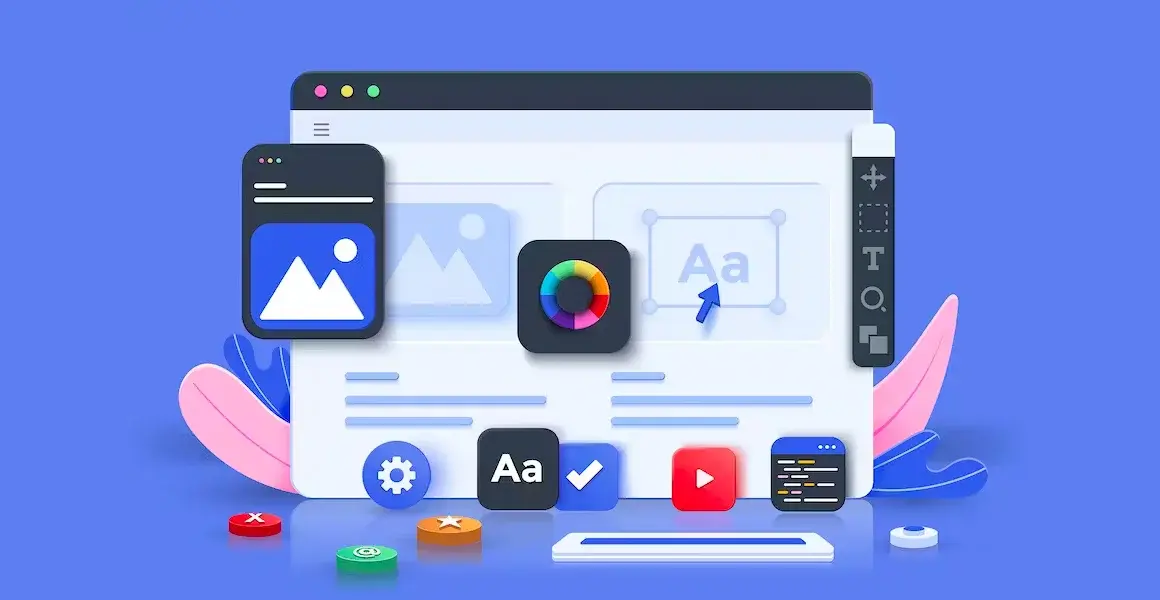Designing Websites that Drive Conversions
How do you capture the attention and wallets of target audiences?

Master conversion-focused website design by understanding your audience and appealing to their emotions.
Introduction: The Key to Conversions
Today, people struggle with FOMO (Fear of Missing Out) syndrome. That's why it's harder than ever to get their attention. As a web design company, we know that a successful website must be visually appealing and conversion-oriented. But to achieve this, it is important to understand the psychology behind customer decisions and emotions. Let's take a look at effective techniques for designing a converting website.
1- Understanding the Target Audience
It's important to understand your target audience before you start designing. Who are they? What are they interested in? What are their problems? By understanding your target audience, you can increase your chances of converting visitors into customers by creating a design that suits their needs and preferences.
Example: If your target audience is young and tech-savvy, a bold and modern design with interactive elements will be more appealing to them. In contrast, a simple and clean design would be more appropriate for an older audience. You should pay attention to such issues during the interface design stages.
2- Keep it Simple
The proverb says "less is more" and this applies to web design as well. A simple and clean design makes it easy for users to navigate and find what they are looking for. A complex website leads to cognitive dissonance. That's why visitors get overwhelmed and leave the site.
Anecdote: Why did the web designer go bankrupt? Because he couldn't find the right "balance"!
3- Leverage the Power of Emotions
Emotions play an important role in customer decisions. You increase conversions by arousing the right emotions with the design of your website. For example, using warm colors creates a sense of comfort and confidence. Cool colors create the effect of professionalism and reliability.
4- Reduce Cognitive Dissonance
Cognitive dissonance is the discomfort that occurs when a user experiences conflicting thoughts or emotions. This will cause them to move away from your website. To minimize cognitive dissonance, you must ensure that your website design is consistent. You should also make sure that it aligns with your brand's message and values. It is not easy to achieve this harmony when it comes to graphic design services.
5- Use Attractive Mini Titles
Eye-catching mini-titles grab your readers' attention. It keeps them constantly interacting on your website. You can use these headings to break up long blocks of text and highlight important information. Make sure it's easy for visitors to find what they're looking for. This will increase conversions.
Example:
"Wait, There's More!"
"Did you know this?"
"Here's the Source of the Secret!"
6- Master the Pricing Strategy
In addition to designing an attractive website, you should implement an effective pricing strategy. How you present your prices has a huge impact on conversions. Here are some tips for optimizing your pricing strategy:
a. Offer Discounts Strategically
Offering discounts is a powerful way to increase conversions. But you should use them strategically. Offering too many discounts or offering them all the time lowers the value of your products or services. Whereas, do limited-time offers or seasonal promotions instead. This creates a sense of urgency.
b. Use Pricing Anchors
Pricing anchors provide customers with a reference point. This way it makes your products or services look like a better deal. For example, offer a higher priced item alongside a lower priced option. In this way, you make the lower-priced option look more attractive. This is known as the anchor effect and affects the customer's perception of value.
c. Offer Price Levels
You can reach audiences with different budgets by offering different price levels for your products or services. This approach allows potential customers to choose the package that best fits their needs and budget. Which means increasing conversions.
Conclusion: Design for Success
In summary, designing a converting website requires a deep understanding of your target audience, their emotions, and the psychological factors that influence their decision-making processes. So by keeping your design simple and consistent, harnessing the power of emotion, and using eye-catching mini-titles, you can create an impressive site that turns visitors into customers. Those who provide frontend development services should keep these principles in mind.